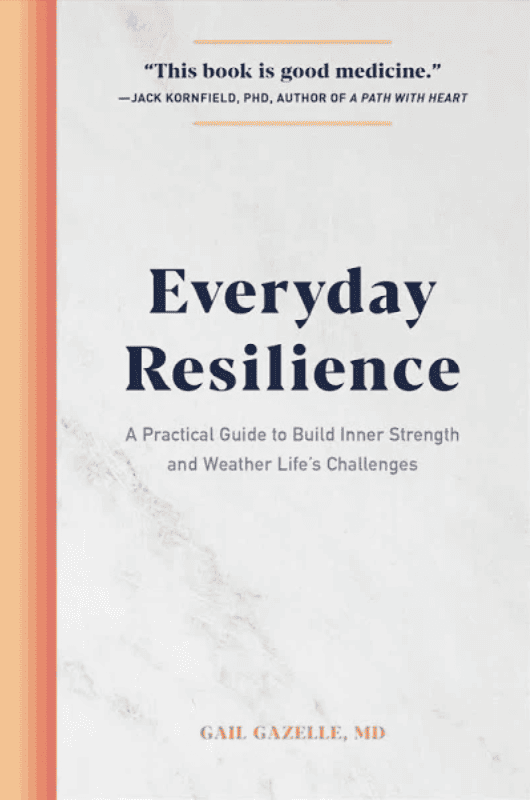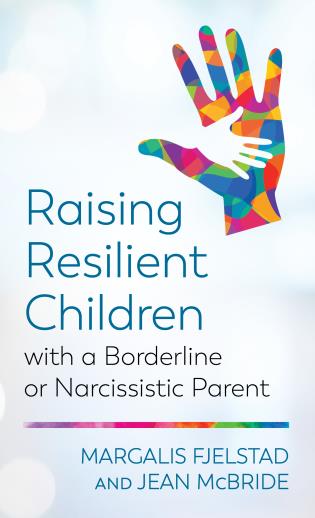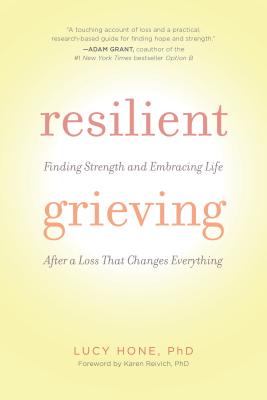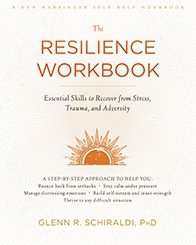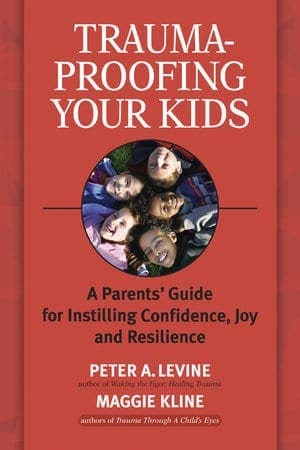Humanness and Emotions
Resilience and Mental Health
THC Editorial Team June 26, 2021

Contents
- Overview
- What Is Resilience?
- Resilience and Mental Health
- Factors That Affect Resilience
- Neurological Basis of Resilience
- How to Practice Resilience
Resilience is a psychological skill that anyone can learn.
What Is Resilience?
According to the American Psychological Association, resilience is “the process of adapting well in the face of adversity.”1 Such adversity can include threatening events, traumas, physical injuries, or stressors at home, work, or elsewhere. Resilience consists of the ability to effectively spring back from crises and learn and grow from such experiences.
Notably, resilience is not a biological trait that people either have or lack. Instead, it is a psychological skill that anyone can learn.1 It involves thoughts and actions that people can cultivate to cope with life’s inevitable stressors successfully.
The History of Research on Resilience
The concept of resilience has been mentioned in human history since early folklore and oral tradition. Stories of peoples who were able to survive and conquer the challenges of life have been passed down through generations and across cultures.2 However, people in psychology and psychiatry have grown more interested in the concept of resilience over time.
For instance, disciplinary interest in human resilience surged during the 1970s when psychologists and psychiatrists interested in the causes of psychopathy conducted a study to observe how having parents with psychopathy affected the development of their children.2 Researchers in this particular study proposed that children whose parents experienced psychopathy would develop serious health problems or psychopathy of their own. However, the researchers were surprised to find that most of the children exhibited healthy development over time. As detailed in the Oxford Handbook of Positive Psychology, the results of this study sparked widespread disciplinary interest in the notion of resilience and led to further research on the topic.2
More recently, psychologists have recognized the complexity of human resilience. Many factors, including gender, society, and culture, may affect a person’s level of resilience. In addition, understandings of resilience may vary from person to person, and an individual’s level of resilience may change over time.3 For example, although someone may bounce back quickly from a job loss, the same person may struggle to cope with everyday life after they experience a romantic breakup. Similarly, someone who struggled with a particular problem as a child may tackle that problem with ease as an adult.3
Groups of people can also be resilient. A significant marker of a successful society is one that can evolve from hardships like poverty, natural disaster, or war. Research as recent as the past decade has shown how groups and organizations manage stress and adversity while preserving function.4 Reactions following the September 11 terrorist attacks on the United States provide a good example. Despite this atrocity, citizens were able to recuperate and rebuild their lives, and airport security and foreign policy were reformed to prevent future attacks. Thus, the United States demonstrated its resilience in the face of a devastating event.1
Resilience and Mental Health
Resilience can be a protective factor against, a risk factor for, and a defense mechanism in developing and maintaining mental conditions and clinical disorders such as suicide.5
Specifically, some research has shown that resilience can buffer against anxiety and stress disorders such as depression and posttraumatic stress disorder (PTSD). In addition, due to its protective potential, resilience is being considered in the use of different therapies for anxiety and stress disorders. Because resilience is not an inherent biological trait but a learned characteristic, a therapeutic approach to developing resilience would be a beneficial treatment for conditions with symptoms that are mitigated by resilience, such as those discussed below.5
Resilience, Depression, and Anxiety
Researchers have found that the less resilience a person possesses, the more likely they are to develop depression and anxiety. For example, one study published in 2012 by researchers from Quaid-i-Azam University in Pakistan investigated the relationships between resilience, stress, depression, and anxiety in people who had been displaced due to armed conflict. The 125 participants, both male and female, completed scales measuring trait-based resilience and depression or anxiety. The researchers found that resilience was inversely correlated with depression, anxiety, and stress. They also found that women in the study experienced more stress, anxiety, and depression than men. In general, this study’s findings support assertions that a lack of resilience is associated with increased depression, anxiety, and stress.6
Resilience and PTSD
It can be highly beneficial to return to a healthy mental state after experiencing trauma that may otherwise lead to the development and maintenance of PTSD. In one study conducted by Streb and colleagues at Saarland University in Germany and published in 2013, researchers explored whether resilience and a good sense of coherence (one’s confidence in their general ability to cope with stressors) could offer psychological protection from PTSD in paramedics. In the study, 688 paramedics were assessed for PTSD, resilience (using the resilience scale),7 and sense of coherence. The results revealed that resilience and sense of coherence were inversely correlated with PTSD symptoms. Streb’s results suggest that enhancing one’s resilience may mitigate symptoms of PTSD.8
Factors That Affect Resilience
Research has pointed to three main psychosocial factors that may affect a person’s level of resilience.5 Because these factors are controllable to some degree, people might be able to increase their resilience by developing them. Research suggests that “the psychosocial relationship between the three closely related factors… is the basis for the development, effective use, and maintenance of resilience in traumatic events.”5
Active Coping
When someone experiences a traumatic event, it has a psychological effect on them. Being able to control one’s emotional reactions to problems is key to recovering from trauma. Active coping is a stress-management strategy that involves a person engaging with the traumatic event or stressful circumstance to move past it instead of avoiding it and passively allowing it to influence one’s life negatively.9 Researchers have argued that active coping can be an effective form of resilience.5
Cognitive Flexibility
Life is full of unforeseen challenges and stressors, and having a rigid mindset doesn’t allow for adaptation and hinders resilience. It is essential to adjust to life’s inevitable changes as they come and bend to new perspectives. Cognitive flexibility is the ability to take on new perspectives and store the information on dealing with stressors gained through life experience. Then, when faced with a new challenge, one can process it with different perspectives and contexts to mitigate the potential harm.5
Social Support
Taking on life’s challenges by oneself can be very overwhelming. Research has shown that a person’s social environment significantly impacts their level of resilience.10 Social support refers to the help and comfort one receives from their social network. This can include family, friends, coworkers, and others they talk to and interact with to de-stress. The larger one’s network and the more meaningful the relationships are, the more support a person receives, and therefore the better they may lessen their reaction to trauma.5
In one 14-year-long study published in 2003, researchers studied the development of PTSD in war veterans relative to the types of reactions they received from their communities upon returning from war. They found that those who received negative reactions from their community were more likely to develop chronic PTSD.11 Another 20-year-long study investigated a similar question. Published in 2013, this study involved observing the likelihood of veterans from Israeli combat developing PTSD in relation to social support. The results indicated that social support successfully mitigated symptoms of PTSD in the veterans.11 Thus, both these studies demonstrate the value of having a supportive network of people when coping with traumas.
Neurological Basis of Resilience
In addition to psychosocial factors, some researchers have suggested that a person’s level of resilience is, at least in part, influenced by genetic or neurological factors. Although research on the neurological basis of resilience is still in its infancy, recent decades have seen more neuroimaging research to determine the neurological and biological components of resilience. One study published in 2019 by Shi and colleagues at Southwest University in Chongqing, China, sought to explore the neural basis of psychological resilience and its relationship to positive affect (mood). Researchers supplied 230 healthy college-aged students with a resilience questionnaire and an affect questionnaire. Then the researchers examined the subjects’ brains with neuroimaging. The results revealed that the brain’s functional connectivity involved in emotion regulation and emotional flexibility, such as the left insula, the left inferior frontal gyrus, the left orbitofrontal cortex, and the left inferior frontal cortex, was positively correlated with resilience. Positive affect is associated with the left inferior gyrus, showing additionally that positive affect correlates with resilience.12 Thus, the findings of this study further support that emotion regulation and flexibility are associated with resilience.
How to Practice Resilience1
Building resilience requires putting in the effort to practice healthful behaviors. This way, when a person encounters a bump in the road of life, they can reach back to their healthy habits and coping mechanisms for the strength to move forward. Resilience does not mean simply passively accepting one’s circumstance, nor does it mean avoiding difficulty and stress altogether. Instead, actively practicing resilience allows one to build up the inner strength and fortitude to cope when, inevitably, challenges arise.
Gain Social Support
As noted above, cultivating a strong social network is one of the best ways to increase your resilience. Reaching out to loved ones and maintaining solid bonds can help people ensure they have the comfort they may need in stressful times. Look for this type of support from a broad range of people, including those at home, at work, in faith-based groups, or among friends or teammates.
Change Your Mindset
Changes, big and small, are an inevitable part of life and cannot always be controlled. Being able to accept or adapt to this inevitability enables people to remain peaceful as life changes. Try to reframe problems in life as challenges that can help you grow and learn.
Set Goals
Setting goals can be a great way to challenge yourself and accomplish things. For example, when dealing with a difficult situation, such as grieving a loved one, setting and achieving small goals, like going for a walk or reaching out to a friend, can help you progress. Goals can also give you a sense of purpose, motivating you to come back from a setback even stronger. Your goals don’t need to be lofty; they can be as simple as committing to helping others, reading books, watching movies, or listening to podcasts. These are all great ways to begin searching for or thinking about ways you might meaningfully intervene in the world around you.
Take Care of Your Physical health
What you put in your body and what you do with it can affect your physical and cognitive functioning. Maintaining a healthy diet, exercising, getting enough sleep, practicing relaxing, and partaking in hobbies you enjoy are all excellent ways to bolster your physical and mental health and increase your overall resilience.
Seek Professional Help
If you experience difficulties maintaining healthy habits, consider reaching out to a mental health professional for support or ideas about therapy forms that may help you.
For example, some research suggests that strengths-based cognitive-behavioral therapy (CBT) may be an effective method to increase resilience. Strengths-based CBT involves a personalized four-step approach to aid people in growing positive qualities by identifying their existing strengths and using them to create a path toward resilience. Finding strengths is the first step, and those are used to construct a “personal model of resilience”13 (Step 2), which is then applied (Step 3) and practiced (Step 4).13









